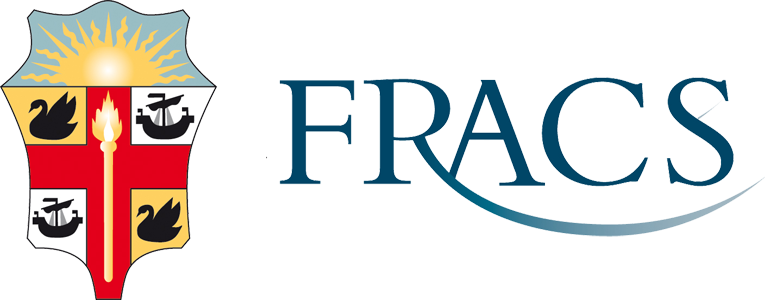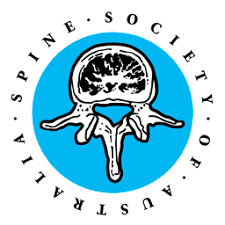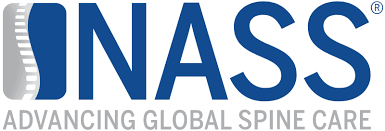Cervical Total Disc Replacement
What is Cervical Total Disc Replacement?
The discs in your spine act as shock absorbers, positioned between the blocks of bone called the vertebra. A disc comprises an outer wall of oblique fibres called the Annulus Fibrosus and an inner gel containing protein and water called the Nucleus Pulposus. The discs are flexible, allowing the spine to bend forward (flexion), backwards (extension), sideways (lateral flexion) and rotate.
Cervical total disc replacement (CTDR), or cervical disc arthroplasty, is a surgical procedure to treat certain conditions affecting the cervical spine (neck). It involves replacing a damaged or degenerated disc in the neck with an artificial disc implant.
CTDR is typically considered an alternative to traditional cervical fusion surgery. It aims to preserve the motion and flexibility of the neck while relieving pain and maintaining stability in the cervical spine.
What is an Artificial Disc?
An Artificial Disc is a device that can be implanted into the spine, replacing the damaged disc to permit normal load bearing and motion of the spine.
The Artificial Disc is also called a disc replacement, disc prosthesis or arthroplasty device. Most disc tissue is removed with total disc replacement, and the artificial disc is inserted into the disc space between the vertebrae.
Artificial Discs have two cobalt-chromium metal plates; one is attached to the vertebra above the disc being replaced and the other to the vertebra below. A central core, either metal or plastic (called polyethylene), is between the two plates, permitting motion in the ball and socket principal. The devices allow motion by smooth curved surfaces gliding across each other.
Artificial discs have been used in Europe since the late 1980s and are approved by the FDA in the USA. The devices were used in Australia from the mid-1990s until 2006, when the TGA approval was withdrawn on cervical artificial discs only because of the cost (approximately AUD 9,000 each). Since 2006 cervical artificial discs have not been funded for public or privately insured patients. Funding continues for lumbar artificial discs. Cervical and lumbar artificial discs are available for self-funded or approved Workcover patients.
Who is Suitable for Cervical Total Disc Replacement?
A Cervical Total Disc Replacement can be used to treat pain arising from a damaged disc, which is compressing the spinal cord or nerve roots which has not responded to non-operative care such as medication, injections, rest and physiotherapy.
Benefits of Cervical Total Disc Replacement
The goal of Artificial Disc replacement is to:
- Maintain motion, not restore motion at the affected disc level;
- Reduce the loading and stress on the adjacent disc levels.
Artificial Disc replacement is usually performed in patients under 55 years of age.
Certain conditions prevent a patient from receiving an artificial disc. These include marked loss of disc space height, thin bones (osteoporosis), a slip of one vertebra across another (called spondylolisthesis), vertebral body fracture, spine tumour or infection, significant wear and tear arthritis in the small facet joints at the back of your spine or allergies to the materials in the artificial disc device. In addition, significant surgery to the front (anterior) of your neck or abdomen, previous radiotherapy or morbid obesity may prevent access to insert the artificial disc device into your neck or lumbar spine.
Potential Advantages of Artificial Disc Replacement Versus Fusion
After removing the painful disc and relief of the spinal cord or nerve root compression, the Artificial Disc allows motion at the operated level.
In contrast to fusion, where the vertebrae above and below the damaged disc are fused, the Artificial Disc may reduce the wear and tear risks to discs above and below the operated level.
The Artificial Disc may permit a more rapid return to activities than fusion surgery.
The patient is encouraged to return to gradual progression and normal motion early in the postoperative period.
Types of Cervical Total Disc Replacement
There are different types of artificial disc implants used in CTDR, including
- Metal-on-Polymer: This artificial disc consists of metal end plates that attach to the adjacent vertebrae and a polymer (plastic) core that cushions and facilitates motion.
- Metal-on-Metal: These artificial discs use metal endplates and a metal core to replicate the natural movement of the cervical spine. They are designed to minimise wear and provide durability.
- Metal-on-Biopolymer: These implants combine metal endplates with a biopolymer (plastic) core. The biopolymer core is designed to mimic the characteristics of a natural disc and allow for smooth motion.
Choice of Artificial Disc Prosthesis
Mr Malham is credentialed to use the Prestige, Prodisc-C, Mobi-C, Synergy, Maverick and M6 Lumbar prostheses. He has lectured, taught courses and attends regular national & international conferences on Artificial Disc Replacements.
Mr Malham’s preferred prostheses since 2004 are the Prestige and Synergy in the cervical or neck and Maverick with M6 in the lumbar region. This choice is based on the safety, stability (resistance to shear forces) and results these devices provide. All devices are TGA approved in Australia and FDA-approved in the U.S.A.
Mr Malham has no financial arrangement or benefits from using these prostheses.
Preparation for Cervical Total Disc Replacement
Tell Mr Malham about any medical conditions or previous operations. Suppose you have a medical condition such as diabetes, heart problems, high blood pressure or asthma. In that case, Mr Malham may arrange for a specialist physician to see you for a pre-operative assessment and medical care following the neurosurgery.
Inform Mr Malham of the medication you are taking and/or have allergies to medications. You must stop using the following ten days pre-operatively:
- Aspirin
- Plavix
- Isocover
- Asasantin
You must stop using blood thinning medication (such as Warfarin) 3-5 days pre-operatively.
Single and Two Level Disc Injuries
- Single-level cervical and lumbar disc injury - One-level Artificial Disc Replacement is appropriate. Single-level cervical and lumbar adjacent segment disease above a previous fusion level - one-level Artificial Disc Replacement is appropriate.
- Two-level cervical disc injuries - Two-level Artificial Disc Replacement is appropriate. Two level lumbar disc injuries at L4/5 and L5/S1 - perform “Hybrid” surgery with L5/S1 Anterior Lumbar Interbody Fusion (to provide stable base) and then L4/5 Artificial Disc Replacement (to maintain motion above and reduce risk of adjacent segment disease).
Choice of Artificial Disc Prosthesis
Mr Malham is credentialed to use the Prestige, Prodisc-C, Mobi-C, Synergy, Maverick and M6 Lumbar prostheses. He has lectured, taught courses and attends regular national & international conferences on Artificial Disc Replacements. Mr Malham’s preferred prostheses since 2004 are the Prestige and Synergy in the cervical or neck and Maverick with M6 in the lumbar region. This choice is based on the safety, stability (resistance to sheer forces) and results these devices provide. All devices are TGA approved in Australia and FDA-approved in the U.S.A. Mr Malham has no financial arrangement or benefits from using these prostheses.
Cervical Total Disc Replacement Procedure
During a CTDR procedure, the following steps generally take place:
- Anaesthesia: The patient is administered general anaesthesia to ensure comfort and prevent pain during the surgery. This induces a state of unconsciousness.
- Incision: The surgeon makes an incision in the front of the neck to access the cervical spine. The exact size and location of the incision may vary depending on the specific technique used.
- Disc removal: The damaged or degenerated disc is carefully removed from the affected cervical level. The adjacent vertebrae are prepared to receive the artificial disc implant.
- Artificial disc implantation: The surgeon inserts the chosen artificial disc implant between the adjacent vertebrae. The implant is secured in place to ensure stability, typically using screws or other fixation methods.
- Wound closure: Once the implant is positioned correctly, the incision is closed with sutures or staples. The surgeon may place a sterile dressing over the incision site.
- Post-operative care: Following the surgery, patients usually remain in the hospital for a day or two for monitoring and pain management. During this time, healthcare professionals will closely monitor vital signs, provide medication as needed, and ensure the incision site is healing properly.
Cervical Total Disc Replacement Recovery Plan
- No cervical collar is needed post-operatively. Sensible normal activity is advised.
- Avoid bending, twisting, heavy lifting and activities above shoulder height in the first four weeks following surgery.
- Patients can sit for meals for 20 - 30 minutes.
- Car travel is permitted as a passenger for short distances. Driving can be resumed four weeks postoperatively after assessment by Mr Malham.
- Walk four equal small walks per day and undertake a home exercise programme provided to you by the physiotherapist whilst in the hospital.
- Outpatient physiotherapy can be resumed after your 4-week post-operative review by Mr Malham.
Cervical Total Disc Replacement Prognosis
The Cervical Artificial Disc Replacement improves arm pain, numbness and weakness in 80 - 90% of patients. No change in symptoms occurs in 10%.
Studies have shown that CTDR can improve quality of life, reduce pain, and increase patient satisfaction. However, individual outcomes can vary depending on factors such as the patient's overall health, the severity of the condition, and adherence to post-operative care and rehabilitation.
Cervical Total Disc Replacement Risks
The total risk of cervical artificial disc replacement is approximately 2%.
Specific risks are infection, bleeding, hoarse voice (dysphonia), problems with swallowing (dysphagia), Horner’s syndrome (small pupil and drooping eyelid), nerve root damage (causing pain, numbness and weakness in the arms), damage to the spinal cord, causing weakness of arms and legs (quadriparesis) or paralysis (quadriplegia), failure of the fusion or movement of the cage.
General risks associated with any surgical procedure are heart attack, pneumonia, blood clots in the legs (DVT), which can travel to the lungs (pulmonary embolism), stroke, drug reaction, general anaesthesia and death.
What if CTDR is Delayed?
If CTDR is delayed, the individual may continue to experience symptoms related to their underlying condition, such as neck and arm pain, limited range of motion, and reduced quality of life. Delaying treatment could lead to further degeneration of the affected discs or additional spinal issues. However, the impact of delayed treatment can vary depending on the specific condition and individual circumstances.
Consult with a neurosurgeon to assess the severity of the condition and determine the most appropriate course of action. They can provide personalised guidance on the risks and benefits of CTDR and help decide if delaying the procedure would be advisable or if alternative treatments or interventions may be necessary.



